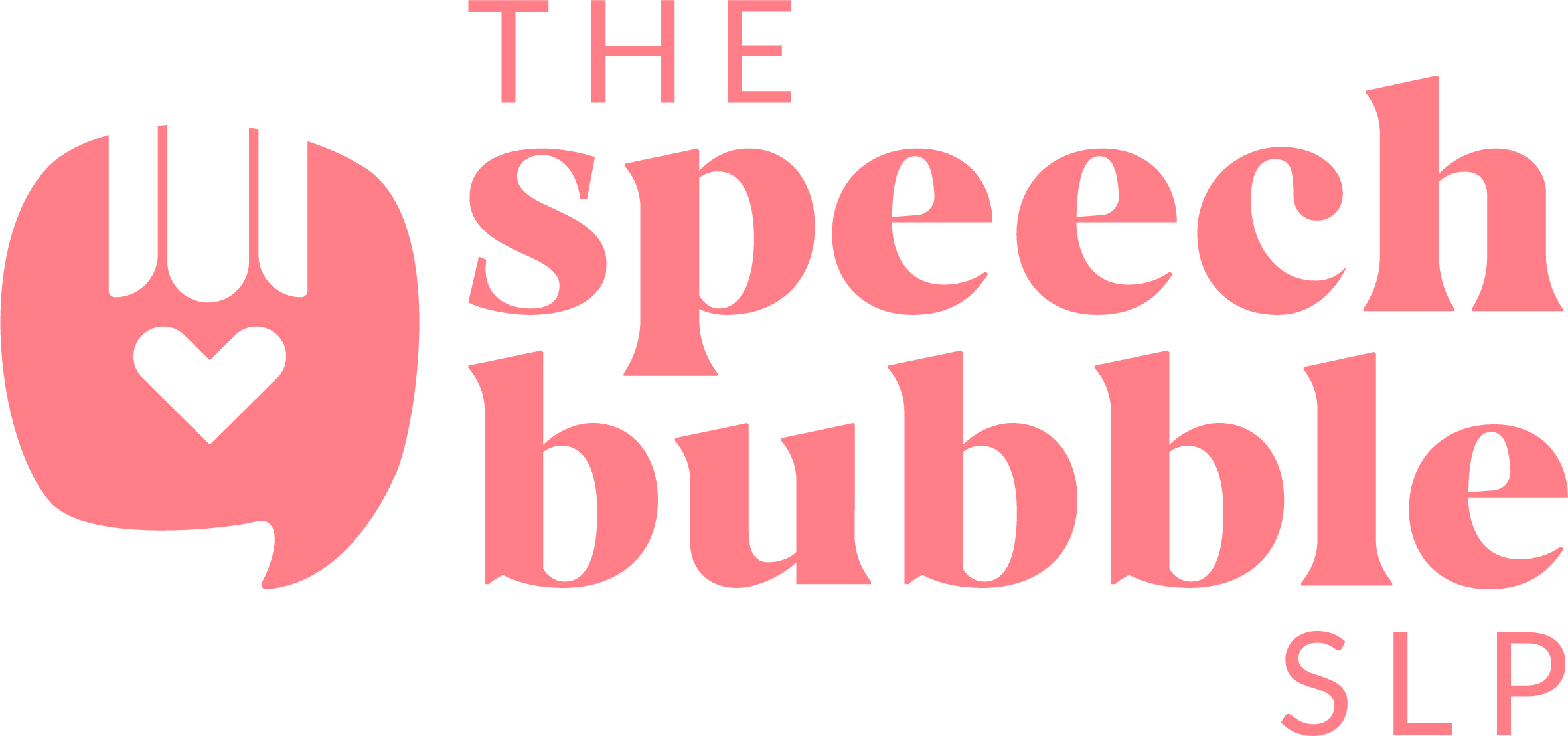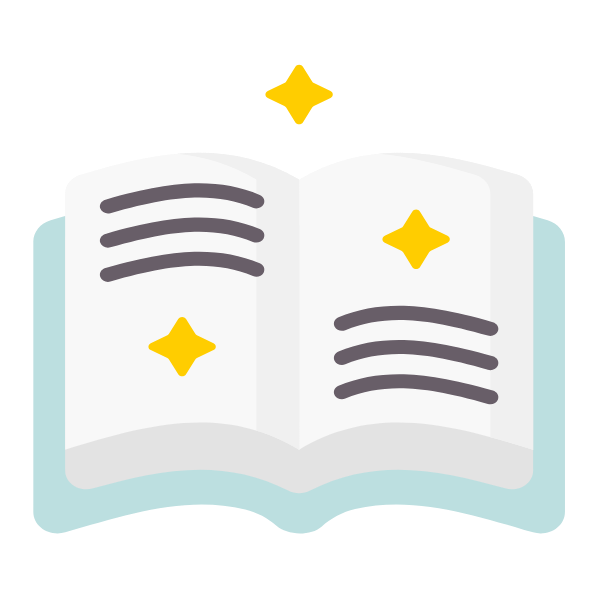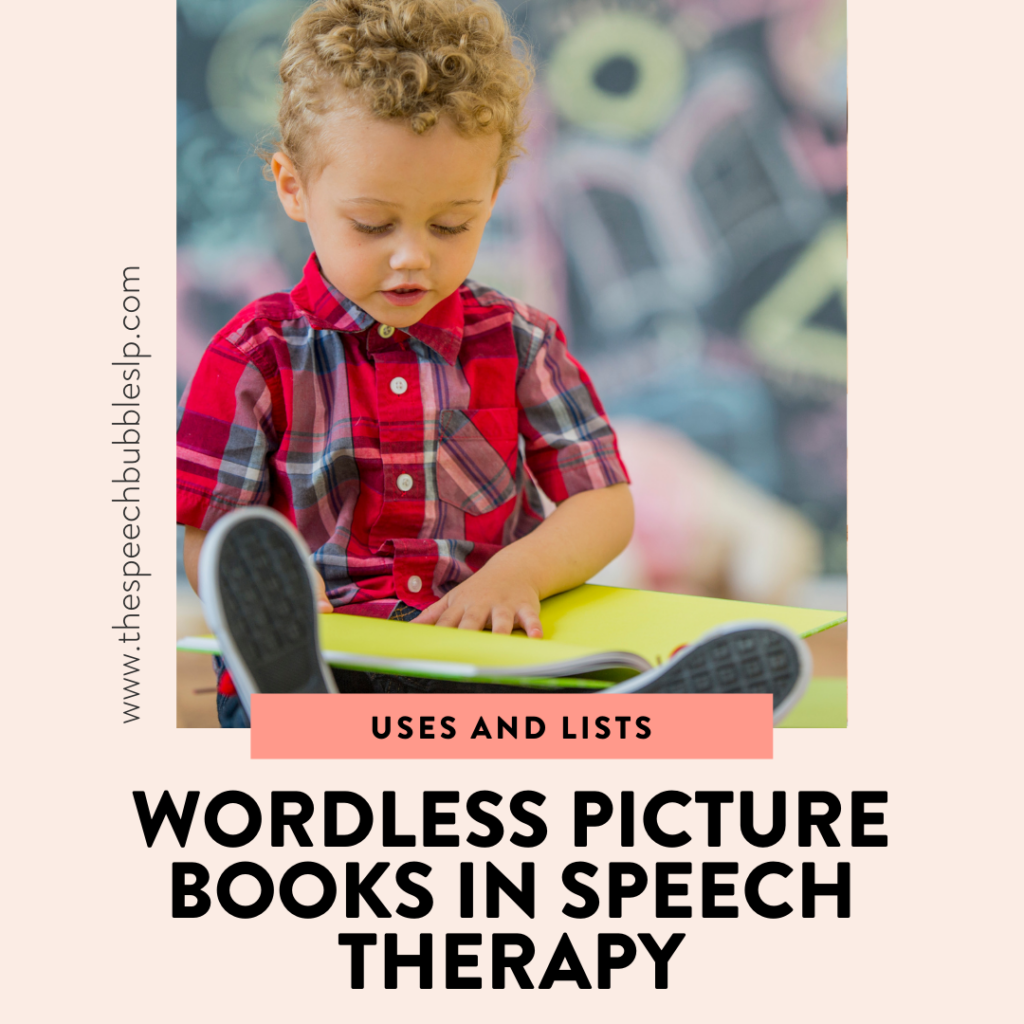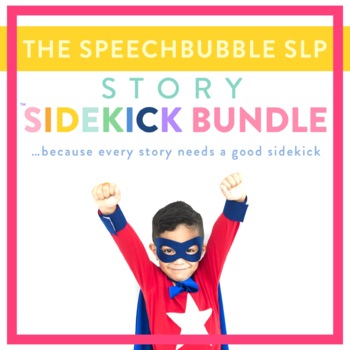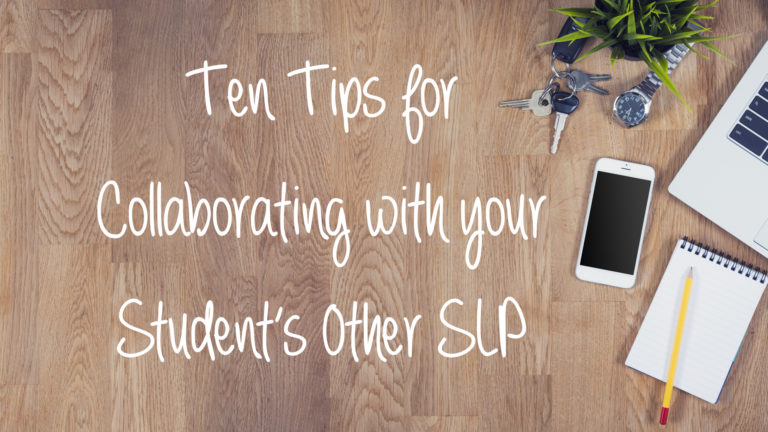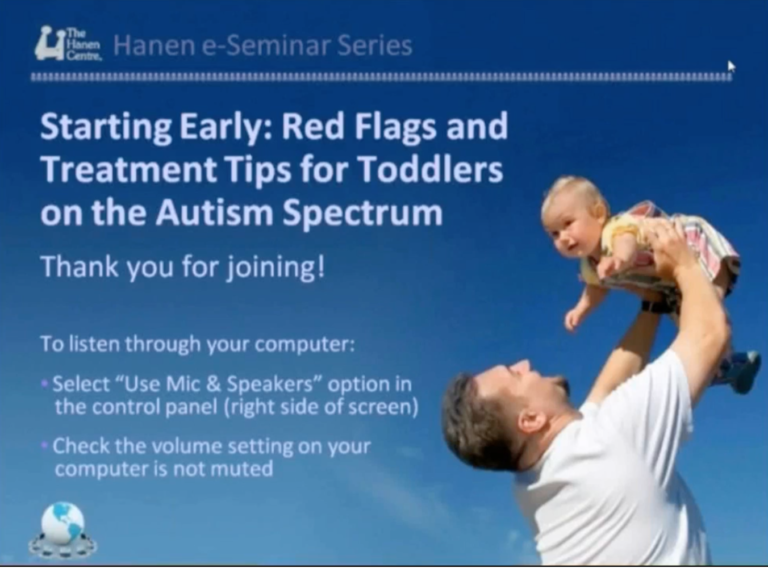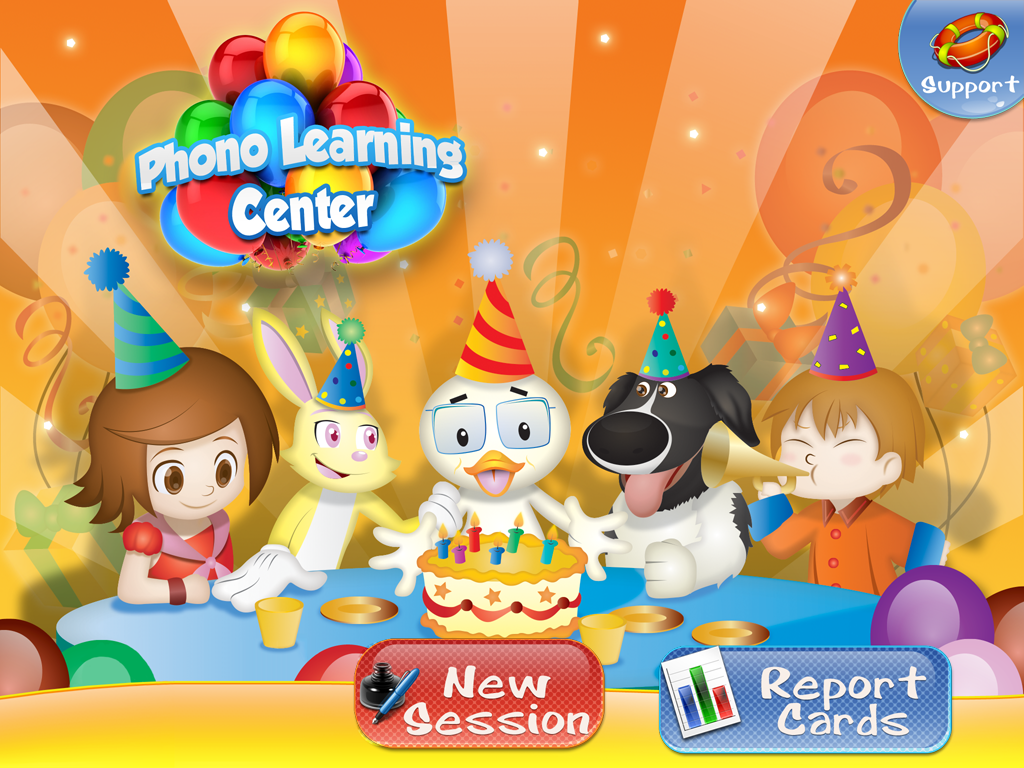Wordless pictures are an SLPs BFF. They are compact and offer an endless supply of communication opportunities! They allow you to tie in literature without overwhelming students who may likely be struggling with text in the classroom. This is a way to provide a bridge to classroom activities but allow the student to focus on developing their language rather than working to decide text.
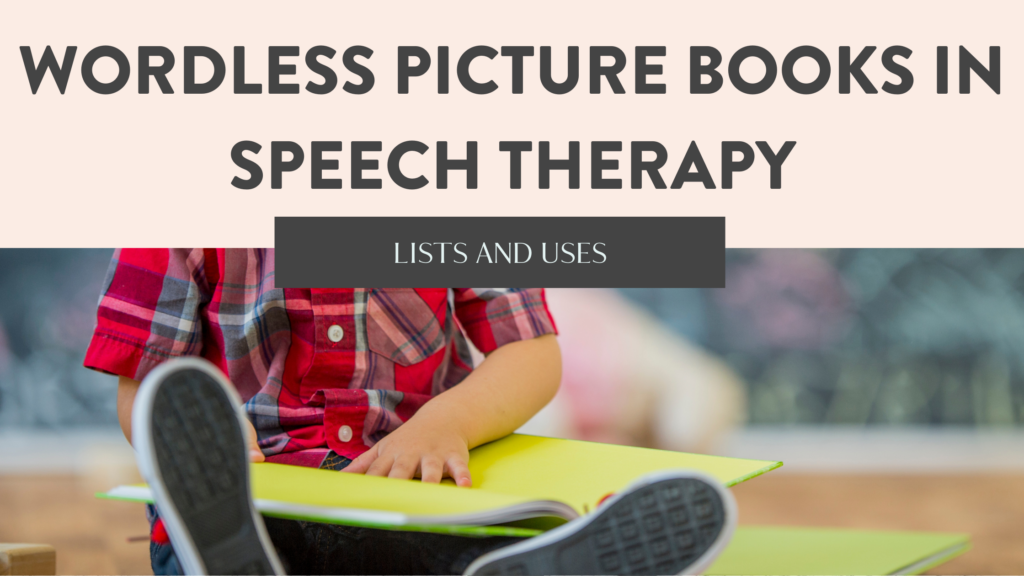
*This post contains affiliate links
Below is a list of some of my favorite and well-loved wordless picture books that can be enjoyed and appreciated by your students at any reading level including those with limited English proficiency. These wordless picture books are perfect for supporting our students’ visual literacy and can be used to target a myriad of therapy goals including sequencing, inferring, stating the main idea, and answering -wh questions. It can also be used as an informal, dynamic assessment tool!
A tip with little ones. To up the fun factor, play detective and use a magnifying glass to look for clues!
The Boy and the Airplane by Mark Pett – A simple story of a little boy who loses his favorite toy airplane and spends his time and effort trying to get it back. This book can work alongside a fun and engaging transportation-themed lesson. After reading this book together, allow your students to make up their own similar stories.
Flashlight by Lizi Boyd – This story with simple illustrations explores nighttime and a child’s journey with his flashlight to highlight different creatures he finds in the woods. This book would be perfect for a camping-themed lesson and can also be paired with an I-Spy activity in order to work on naming and s-blends. Students can also use these images to practice sequencing, inferencing, defining, and summarizing.
Flotsam – A interesting tale of a boy who finds unexpected treasures at the shore of a beach. This treasure draws him into examining different parts of the world through photography. Students will need to be paying close attention to the details in the illustrations in order to follow the stories. Be sure to give your student the definition of flotsam as they will need that background knowledge to better understand the story.
One Little Bag: An Amazing Journey – This is an Earth Day pick! A precious story about being mindful of our planet. The journey of a young boy and a little bag that is reused over and over again including the memories that go along with it. The images and narrative sequences will require the student to interpret it explicitly by slowing down and paying close attention to the details.
Penguin Sets Sail by Jessica Linn Evans – The story of a penguin whose dreams are to be a sea captain. He sets out on a journey in search of friends and treasure but he soon realizes that it is harder than he thought. Students can construct their own narratives based on the story as well as think of a title that they think suits the story best. This task may be very difficult for your student as there is no written text for them to rely on.
Shine by Dagny Griffin – Little Mia is a happy child full of love and joy who slowly shares her love with those around her. Students will be able to see her usually dull, sad, and the cheerless city turn into an assortment of beautiful colors. While reading the story, students can target comparing/contrasting while making inferences, answering -wh questions, and constructing their own narratives.
Wolf in the Snow – A winter-themed wordless picture book about a little girl and a wolf pup lost in the snow and their journey home. Students can make their own stories after reading the book as well as practice summarizing, writing captions, and dialogues for the images.
Fly! – This book by Mark Teague is really fun. It is about a baby bird that needs to learn to fly to get back to his nest but since he doesn’t really want to fly ( because it’s hard ) he think of many other ways to try despite his momma bird’s encouragement. A fun extension for this book is for kids to fill a things that fly category with as many items as possible, then, if possible test some out. You can also focus on the other direction and have kids test what can float down. A small toy figure tied to a tissue can create many opportunities for planning, visualizing, sequencing, cause and effect, etc.
If you have student who may be older there are lots of options too! There are pictures books with more mature illustrations and content. I like the Journey Trilogy when focusing on working older students and anything by Bill Thomson
For more ideas on how to use wordless picture books, join Level Up and learn the foundational skills needed to start planning your therapy sessions today!

